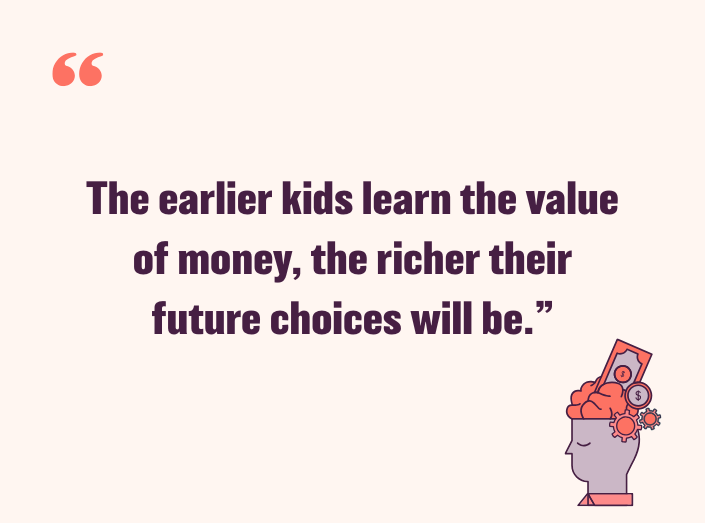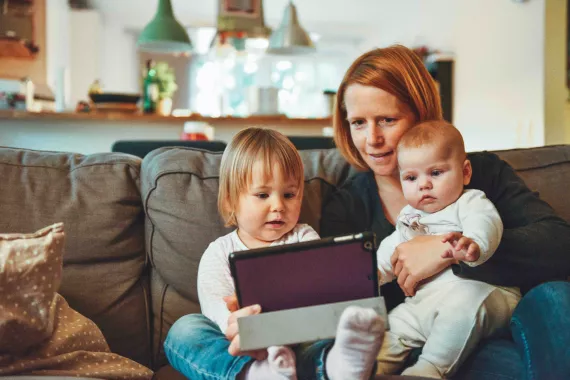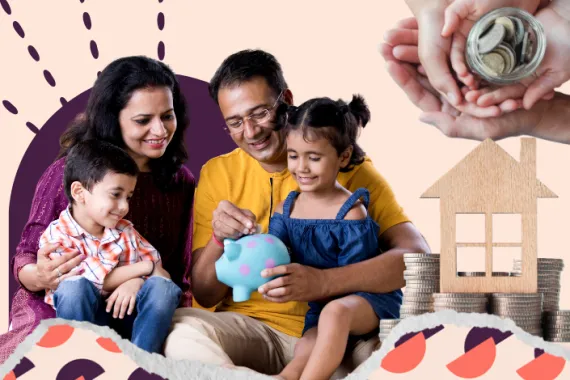Teaching kids about money is one of the best gifts you can give them
Children are naturally curious. They watch how adults spend, save, and talk about money long before they ever open a bank account. That means you are already teaching them lessons about money every day, whether you realise it or not.
By making those lessons intentional, you can give them skills that last a lifetime. Teaching kids about money is not about turning them into financial experts overnight. It is about helping them understand value, choice, and responsibility in ways they can relate to at every stage of life.
Here are ten simple, practical ideas you can use, whatever age your children are.

Start early with simple concepts
Even very young children can understand that money is used to buy things. Use coins and notes in everyday play or show them how you pay for items in a shop. This helps them see that money has value and is exchanged for goods and services.
Use pocket money as a teaching tool
Pocket money is a great way to help children practise making decisions. Whether they get a small amount weekly or monthly, encourage them to think about how they will spend, save or share it.
Let them make small financial choices
Give them a budget for a small treat and let them decide what to buy. They will learn that choosing one thing often means giving up another, which is an important part of managing money.

Show them the difference between needs and wants
Talk about everyday purchases and explain which ones are essential and which are extras. For example, food is a need, while eating out at a restaurant is a want. This helps children understand priorities.
Involve them in family budgeting
As children get older, let them see parts of the household budget. You do not need to share every detail, but showing them how you plan for bills, savings, and fun spending helps them see how money works in real life.
Encourage saving for something they want
Help your child set a goal for a toy, game, or outing. Create a savings jar or account and add to it regularly. Watching the total grow teaches patience and persistence.

Use everyday moments as lessons
A trip to the supermarket can be a chance to compare prices. A holiday can be a way to talk about saving for big events. Money lessons do not have to be formal; they can happen in the middle of ordinary life.
Introduce them to banking
A trip to the supermarket can be a chance to compare prices. A holiday can be a way to talk about saving for big events. Money lessons do not have to be formal; they can happen in the middle of ordinary life.
Teach them to give as well as spend
Encourage your child to put aside a small portion of their money to donate to a cause they care about. This fosters empathy and shows that money can be used to make a positive difference.
Model the habits you want them to learn
Children learn more from what you do than from what you say. Show them how you save, avoid impulse buys, and plan for the future. Your actions will speak louder than any lesson.

Final thoughts
Teaching kids about money is an ongoing process. The lessons you start now will grow with them, helping them become confident, thoughtful adults who know how to manage their finances.
Want more ways to raise financially confident kids?
Check out our courses for parents who want to make money education part of everyday life. Learn simple, age-appropriate ways to build lifelong skills in your children.
👉 Explore our upcoming courses
Because the best time to start teaching kids about money is today.
Discover more
-
Talking money with your children
We often reference our relationships with money in the context of how we were raised. Conversations or examples from our parents m... -
10 Ways to Build Long-Term Financial Security for Your Family
Secure your family’s financial future with 10 proven strategies to save, invest, manage debt, and create lasting wealth and stabil... -
11 Practical Ways to Build Wealth as a Family in 2025
Want to build wealth as a family in 2025? These 11 practical strategies will help you grow your finances together with clarity, co...



